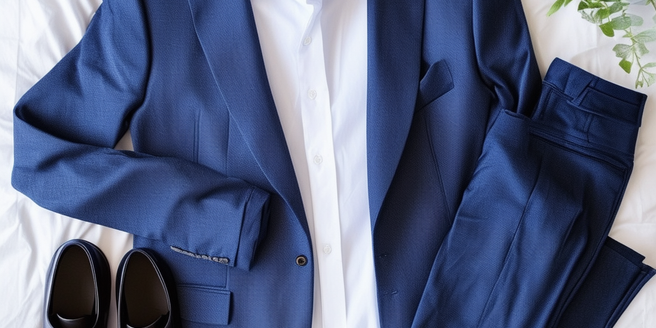
Understanding Dress Codes: Formal to Casual
In today’s diverse work environments, understanding dress codes is crucial. It is important to recognize the differences between formal, business casual, and casual attire to navigate workplace expectations. Formal attire often includes suits, ties, and polished shoes, symbolizing professionalism and respect for the workplace. Business casual relaxes these rules slightly, allowing for neat trousers, dress shirts, and blouses without the need for full suits. Casual dress codes are even more relaxed yet should still avoid overly informal items like gym wear. Adhering to the appropriate dress code can influence how colleagues and superiors perceive you. Knowing these distinctions helps ensure you present an image that aligns with company culture and expectations.
How to Choose the Right Business Suit
Selecting the perfect business suit involves several key considerations. First, focus on fit—ensure the suit jacket shoulders align with your own, and the pants fit comfortably at the waist and through the legs. When trying on a suit, practice sitting and moving to ensure comfort in all positions. Fabric is also essential; wool or wool blends are versatile and can be worn year-round. Choose colors like navy, gray, or black for maximum versatility. Finally, pay attention to details such as lapel styles, button configurations, and pockets to suit your personal style. A well-chosen suit projects confidence and competence.
Essential Accessories for a Polished Look
Accessories can elevate your professional wardrobe, adding sophistication and personal flair. A quality belt, preferably in leather, should match your shoes in color. Ties, pocket squares, and cufflinks can bring a touch of elegance to suits and dress shirts. Watches, too, are key; opt for a classic design that complements your outfit. Sunglasses, if worn appropriately, can also add an extra layer of style. Adding a stylish briefcase or handbag can also contribute to a polished look. Minimalistic jewelry, such as simple earrings or necklaces, works well for a refined look. Remember, accessories should enhance your overall appearance, not overpower it.
Grooming Tips for a Professional Appearance
Attention to grooming is essential for maintaining a professional appearance. Start with a neat haircut that suits your face shape and is easy to maintain. Choose a hairstyle that complements your features and feels comfortable. Facial hair should be well-trimmed or clean-shaven. Wearing clean and well-fitted clothes can also enhance your overall look. Regular skincare routines, including cleansing and moisturizing, help keep your complexion clear and healthy. Nails should be clean and trimmed, free from dirt. A light touch of cologne or perfume is acceptable, but avoid overwhelming scents. These grooming habits reflect personal care and respect for your professional environment.
Seasonal Wardrobe Tips: Dressing for Climate
Dressing appropriately for the climate not only ensures comfort but also demonstrates thoughtful professionalism. In warmer months, opt for light, breathable fabrics like cotton or linen to stay cool. Lighter colors can also help reflect heat. During colder seasons, layering becomes essential. Don’t forget to consider the functionality and versatility of your garments. Pay attention to accessories that can enhance both style and function. Invest in quality overcoats, scarves, and gloves to maintain warmth while looking sharp. Incorporate materials such as wool or fleece for added insulation. By adapting your wardrobe to the weather, you maintain a polished, professional image year-round.
Common Mistakes in Professional Dressing
Even with the best intentions, common mistakes can thwart a professional image. Avoid wearing clothes that are too tight or too loose, as fit is paramount. Over-accessorizing can be distracting; aim for a balanced look. Neglecting shoe care is another pitfall—polished, well-maintained footwear completes your appearance. Also, be cautious with colors and patterns; sticking to neutral tones generally ensures a cohesive ensemble. Paying attention to grooming, like maintaining clean and neat nails, can also make a significant difference. Lastly, don’t overlook the importance of current fashion sensibilities; outdated styles can unintentionally project a lack of attention to detail.
